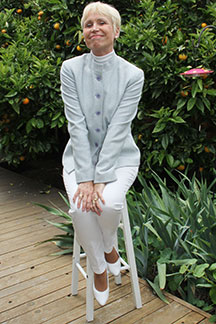Usedom is an island in the Baltic Sea. Shared by Germany and neighboring Poland, its Polish name is Uznam. Prior to 1945, the entire island was part of Germany. However, following World War II and in keeping with the Potsdam Agreement, the eastern part of the island was relinguished to Poland. At the same time, the native German inhabitants were expelled westward and replaced by Poles. Many of the Poles who repopulated the vacated area had been expelled themselves by the Soviets from what had been eastern Poland.
Today, Usedom’s 172 square miles are split between the two countries. About 80% of the island belongs to Germany. However, almost 60% of the isle’s total population of 76,500 inhabits the Polish part of the island. Following World War II and before German Reunification in 1990, Usedom’s German part of the island was part of East Germany.
Usedom’s Geography
The major German cities on Usedom include the city of Usedom in the west, the Dreikaiserbaeder (Three Emperor Spas) Heringsdorf, Ahlbeck and Bansin in the southeast Zinnowitz and the Amber Spas (Koserow, Loddin, Ueckeritz and Zempin) in the northeast, and the small port of Peenemuende in the north of the island. A tiny fishing village in the 1930s, Peenemuende has a darker history. Hitler launched the V-2 rocket here. Today, very little of the weapons factory remains because most of it was destroyed during Allied raids.
The largest city on the Polish side of the island is Swinoujscie. Its German name is Swinemuende.
Usedom – the Sun Island
Usedom is often called the “Sun Island” because it receives more sunshine than any other region in Germany or Poland. And since Germans are famous for their insatiable appetite for sunshine, the island’s average 2,000 hours of sun per year http://www.ostsee.de/insel-usedom/ makes it a choice coastal resort. But sunshine is not the only reason Germans like to vacation on Usedom. Its wide variety of attractions include the island’s 25 miles of white sand beaches, its string of elegant 19th century villas, its renowned medical and wellness spas and its unspoiled nature. In 1990, the entire island was designated a nature preserve. Its interior features castles, lakes and historic villages. A five-mile promenade connects Usedom’s Dreikaiserbaeder. On one side, elegant Wilhelminian villas line the boardwalk. On the other side, sun worshippers relax in wicker beach baskets, known as Strandkoerbe (for more information on the history of the Strandkorb, visit http://www.walled-in-berlin.com/j-elke-ertle/distinctly-german-the-strandkorb/) Small pine forests separate the villages.
Usedom’s History
Usedom has been settled since the Stone Age. Since the late 19th century the island has been a popular summer resort. Two German emperors — Friedrich III (1831 to 1888) and Wilhelm II (1859 to 1941) — were frequent visitors. Wealthy Berliners built their palatial villas on the island. Even during the Cold War Usedom retained its exclusivity because top Communist party functionaries enjoyed the grand island villas. Many of the officials came to savor the Freikoerperkultur (FKK) on the beaches. (for more on FKK in Germany, visit http://www.walled-in-berlin.com/j-elke-ertle/the-skinny-on-nude-bathers-in-germany) Although FKK beaches still exist on Usedom, nudity-seekers are greatly outnumbered by spa-goers.
For a sneak peek at the first 20+ pages of my memoir, Walled-In: A West Berlin Girl’s Journey to Freedom, click “Download a free excerpt” on my home page and feel free to follow my blog about anything German: historic and current events, people, places and food.
Walled-In is my story of growing up in Berlin during the Cold War. Juxtaposing the events that engulfed Berlin during the Berlin Blockade, the Berlin Airlift, the Berlin Wall and Kennedy’s Berlin visit with the struggle against my equally insurmountable parental walls, Walled-In is about freedom vs. conformity, conflict vs. harmony, domination vs. submission, loyalty vs. betrayal.














